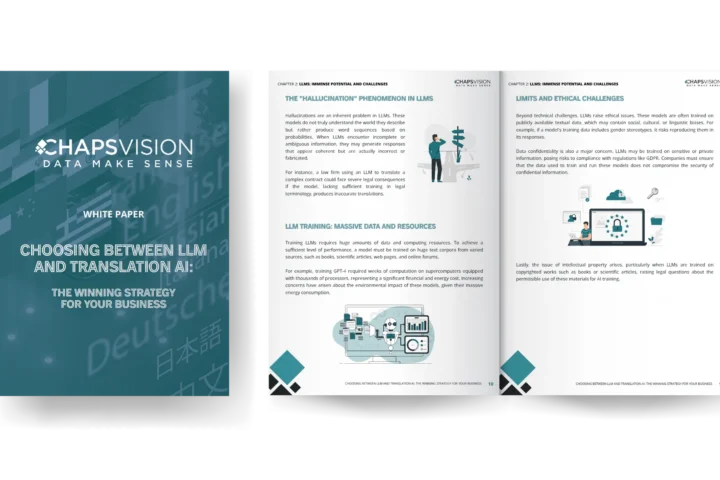In today’s interconnected global economy, where financial transactions occur at lightning speed and across linguistic boundaries, effective communication is essential for success. Machine translation, a technology that has evolved by leaps and bounds, is now playing a pivotal role in enhancing communication within the financial services industry. This blog post delves into the benefits, challenges, and the crucial importance of customization when implementing machine translation in financial services.
Benefits of Machine Translation in Financial Services
Machine translation has emerged as a game-changer for financial professionals, offering a range of benefits that can’t be ignored.
Speed and Efficiency
In financial services, time is money. Machine translation accelerates the translation process, enabling rapid communication across borders. Financial professionals can now access critical information, market insights, and reports in real-time, making informed decisions without delays caused by language barriers.
Global Reach
The financial landscape is global, and businesses operate in diverse markets. Machine translation ensures that communication remains seamless regardless of the languages involved. This widens the scope for international collaboration, client acquisition, and market penetration.
Cost Savings
Traditional translation methods are costly and time-consuming. Machine translation significantly reduces these expenses, making it an economical choice for financial institutions, especially when dealing with high volumes of data and documentation.
Consistency
Machine translation guarantees linguistic consistency across documents, eliminating the risk of miscommunication due to human errors in translation. This is vital for legal contracts, compliance documentation, and maintaining the integrity of financial reports.
The case of FINTECH
In fintech’s rapid evolution, machine translation stands as a essential. Operating globally, fintech startups utilize machine translation to bridge language gaps with users and swiftly analyze financial data. Additionally, it navigates complex regulations effectively. Beyond this, machine translation is crucial for app localization. Fintech apps require seamless adaptation to local languages and cultures. Machine translation expedites this process, ensuring user interfaces, guides, and support materials are accessible to diverse audiences. By incorporating machine translation, fintech ventures enhance user engagement and trust, gaining a competitive edge in diverse markets while embracing the global financial landscape
Challenges of Implementing Machine Translation in Financial Services
While the benefits are substantial, challenges remain that must be addressed to ensure successful implementation.
Accuracy Concern
Financial documents often contain complex jargon and technical terms that require precise translation. Machine translation, while advanced, can sometimes struggle with accuracy in such contexts, potentially leading to misinterpretations and errors.
Data Security
Financial information is highly sensitive and confidential. Entrusting machine translation with such data raises concerns about data security and privacy breaches. Robust encryption and secure systems are essential to mitigate these risks.
Regulatory Compliance
The financial industry is heavily regulated, with strict compliance requirements. Machine translation systems must adhere to these regulations to ensure that translated documents meet legal and compliance standards.
Cultural Nuances
Financial communication isn’t just about translating words; it’s about conveying the right meaning in the intended cultural context. Machine translation can struggle with idiomatic expressions and cultural nuances, which are critical in financial services.
The Importance of Customization
Off-the-shelf machine translation tools, while impressive, might not fully cater to the specific needs of the financial sector. Customization plays a pivotal role in enhancing the efficacy of machine translation in this context.
- Industry-Specific Vocabulary: Financial services have their own vocabulary and terminology. Customization allows machine translation systems to learn and adapt to this specialized language, ensuring accurate and contextually relevant translations.
- Risk Assessment and Management: Financial professionals often deal with intricate risk assessments. Customized machine translation can incorporate risk-related terminology, providing accurate translations crucial for decision-making.
- Client-Focused Communication: Different clients have different preferences and expectations. Customization enables the translation system to align with the preferred tone, style, and language of specific clients, enhancing the client experience.
Implementing Customized Machine Translation in the Financial Services industry
As the financial industry increasingly recognizes the potential of customized machine translation, choosing the right tool and effectively implementing it becomes crucial for success. Here’s a step-by-step guide on how to navigate this transformative journey
Before implementation
1. Identify Your Needs: Begin by understanding your translation needs. Define the languages you work with, the types of documents requiring translation, and the level of specialization needed. Are you dealing with investor reports, regulatory documents, client communications, or a combination of these?
2. Data Collection and Preparation: Gather a diverse dataset of financial documents in multiple languages. This dataset will serve as the foundation for training your machine translation system. Ensure it includes a wide range of document types and terminology specific to your industry.
3. Choose the Right Technology: Select a machine translation platform that allows for customization. Look for platforms that employ neural machine translation and offer the capability to fine-tune models.
4. Customization Phase: This phase involves training the machine translation system using your prepared dataset. Initially, the system might not provide perfect translations, but it will improve over time as it learns from the data. Fine-tune the system iteratively, refining its understanding of financial terminology, context, and style.
5. Testing and Validation: Thoroughly test the customized system with a wide array of financial documents. Evaluate its accuracy, fluency, and ability to capture financial nuances. Compare its translations against those produced by professional human translators and make the necessary adjustments based on the feedback received.
After implementation
6. Continuous Learning and Improvement: Machine translation is a dynamic process that requires continuous learning and enhancement. Regularly update and fine-tune the system based on new data and feedback. As the financial industry evolves, so will the language and terminology, making ongoing refinement essential.
7. Data Privacy and Security: Given the sensitive nature of financial data, prioritize data privacy and security. Choose a machine translation platform that adheres to the highest security standards and offers features like encryption, data segregation, and compliance with relevant regulations like GDPR (General Data Protection Regulation).
8. Integration with Workflow: Integrate the customized machine translation solution into your workflow seamlessly. This could involve integrating it into your content management system, customer relationship management tools, or any other relevant platforms. The goal is to make translation an integrated part of your daily operations.
9. User Training and Feedback Loop: Provide training to your teams on how to effectively utilize the machine translation system. Encourage them to provide feedback on translations’ quality and usability. This feedback loop helps in identifying areas that require further customization and improvement.
10. Performance Monitoring: Regularly monitor the performance of your machine translation system. Keep track of its accuracy, speed, and user satisfaction. This data will guide your ongoing efforts to fine-tune the system and enhance its capabilities.
In conclusion, the integration of customized machine translation in financial services is a strategic move that offers significant advantages. By carefully selecting the right technology, customizing it to your industry’s unique needs, and following a systematic implementation process, financial professionals can harness the power of seamless multilingual communication.
As the global financial landscape evolves, embracing customized machine translation isn’t just a competitive advantage – it’s a necessity to stay ahead in an interconnected world where language barriers no longer dictate the pace of success.





